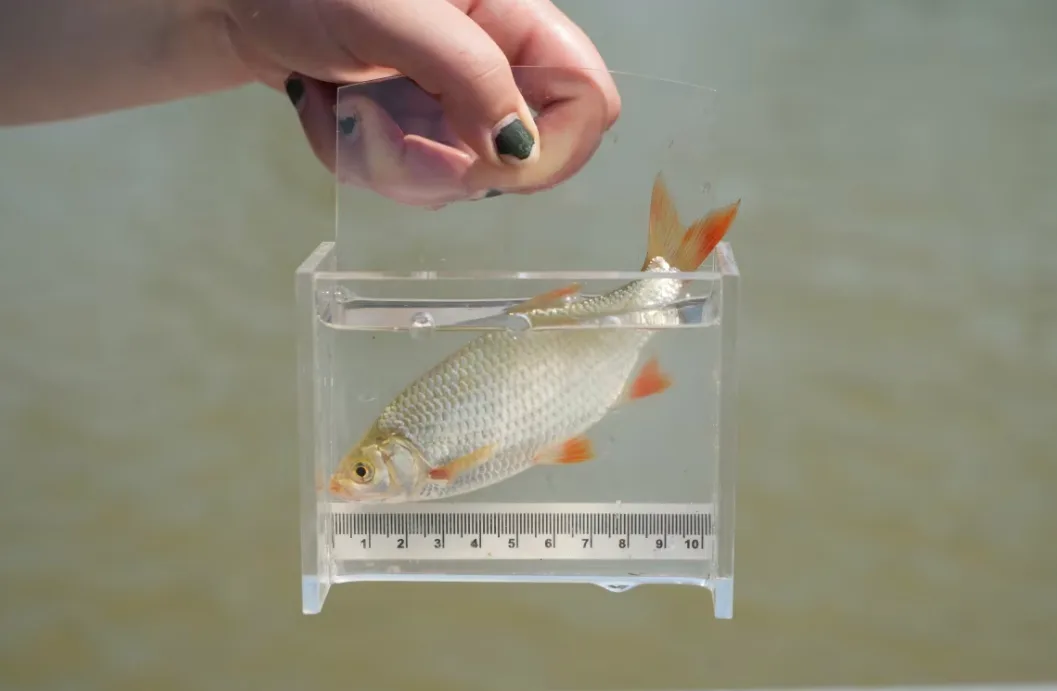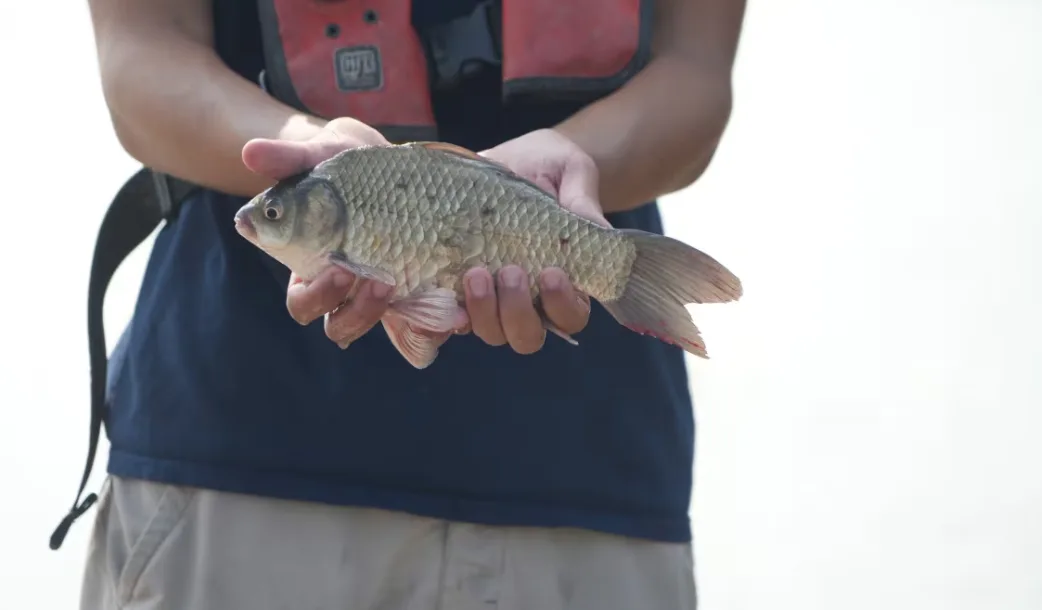
Goldfish, traps, and currents: Inside Canada’s fight against invasive carp
With long wires trailing from its bow like steel whiskers, the Department of Fisheries and Oceans research vessel Nobilis resembles a strange metallic catfish. Below, electric pulses ripple through the Grand River, marked only by a steady beep and the nets poised to scoop up writhing, stunned invasive goldfish and rudd. These fish aren't going back.
This is how Canada's quiet war against invasive carp is waged: with electro probes, underwater nets, traps and the grim efficiency of euthanasia. The DFO granted CBC News exclusive access to join a patrol as crews scanned the river for invasive fish, part of an early detection effort rarely seen up close.
The stakes are high. Invasive carp can consume up to 40 per cent of their body weight in aquatic vegetation and insects each day, stripping wetlands bare. Once fully grown, they average 40 kilograms — making them big, hungry and highly disruptive. Wildlife biologists warn that if even one of the four invasive Asian carp species gains a foothold in Canadian waters, it will permanently alter the Great Lakes ecosystem.
SEE ALSO: 'Very aggressive competitors': New invasive fish detected in Ontario
"This is a high-risk area for us," Alex Price, a senior biologist with DFO's invasive carp program, told CBC News. "We haven't found a grass carp this year with our program, but that's a good sign. It tells us there are very few grass carp in the waters we're sampling."
While they may not be breeding in Canadian rivers, they are at the country's doorstep. U.S. researchers found evidence last year of the fish breeding in Lake Erie's central basin. That makes the Grand River, southern Ontario's largest river system, a prime target for grass carp looking to swim upstream and spawn.
Grand River a 'high-risk area'
The first grass carp ever caught in Canadian waters was found on the Grand near Dunnville in 2013, with two more captured in the same stretch of river since then.

A Department of Fisheries and Oceans scientist holds a rudd, or red shiner in caught near Dunnville, Ont., in July. The species is considered invasive in the Grand River watershed. (Colin Butler/CBC News)
They are among the increasing number of these fish that have been hauled out of lakes Ontario, Erie, Huron and even the St. Lawrence River in Quebec, northeast of Montreal. In all, DFO has processed 34 grass carp since 2012, 21 of which were sterile, another 11 able to reproduce. Two were found dead on a shoreline and were too far gone to tell.
When the DFO captures a fish during a patrol, they're then placed in a holding tank so scientists can get a closer look. Once there, each fish is methodically measured, logged and photographed. Native species, such as largemouth bass, are put back, while invasive species such as goldfish or European minnows are euthanized.
DON'T MISS: Three invasive species living in the Great Lakes
That logging is a key part of the operation. The DFO crews are documenting the pre-invasion native ecosystem knowing the entire Great Lakes watershed may be on the brink of irreversible change.
"The data we collect is very important," Price said. "It allows us to see what the fish communities are in these waters, and if grass carp were to become established, we'd have a good pre- and post-data set to see what exactly are the impacts of grass carp."
Only a matter of time
There are currently no established populations of invasive carp in Canadian waters, but DFO crews know it's only a matter of time before that changes. Breeding populations have been established in Ohio, first in the Sandusky River in 2016, then the Maumee River in 2018. Their recent discovery in Lake Erie puts Canada next on the invasion list.
"There's no doubt about that," said Nicholas Mandrak, a biology professor who studies endangered and invasive fish species at the University of Toronto-Scarborough. He said the fish from the breeding populations discovered in Ohio 10 years ago will soon become large enough to travel many hundreds of kilometres north.
"The question is whether we can prevent them from spawning inside Canadian tributaries," he said, noting researchers have identified 100 river systems along the Great Lakes basin that would provide ideal habitat for grass carp.
Mandrak said the fact that DFO is out there, looking to prevent the invasion in the first place, is what makes the invasive carp program not only important, but rare, as there are few agencies in the world that work to prevent an invasive species' arrival.
"The establishment of grass carp in the Great Lakes would be catastrophic," he said, noting the fish were introduced by humans in the 1960s as a cheap way to remove vegetation from aquaculture ponds. However, they have proven to be so ravenous that farmers often resort to cabbage once the ponds are scoured clean.
"Their purpose is to control vegetation. Vegetation is what makes up our wetlands. Those wetlands are central habitats for our native species."
In other words, the introduction of grass carp would be like having one more uninvited to guest to a party already overrun with invasive species, creating a tipping point that could push the ecosystem into uncharted territory.
Carp join a growing cast of invasive species
The Great Lakes are already reeling from swarms of invasive goldfish, zebra and quagga mussels that have turned the once-murky green waters unnaturally clear.

A Department of Fisheries and Oceans Scientist holds a feral goldfish caught in the Grand River in July. Fish such as these are euthanized, while native fish are returned to their habitats. (Colin Butler/CBC News)
Populations of alewife, have surged in some areas because invasive sea lampreys have devastated rainbow trout populations, removing one of the few natural checks on their numbers.
Lake Erie, the shallowest of the five lakes and long plagued by algae blooms in its industry-heavy western basin, is often the first to show signs of stress. The winter of 2023–24 was nearly ice-free, and this spring brought mass die-offs of temperature-sensitive fish: alewife littering the shores of Lake Erie, gizzard shad washing up on Lake Huron's beaches.
By early July, some areas of Lake Erie had warmed to 30 C, the temperature of bathwater.
Taken together, the signs point to a system under increasing strain, its balance frayed by warming, invasive species and accelerating ecological change.
This article, written by Colin Butler, was originally published for CBC News.
Thumbnail image courtesy: Department of Fisheries and Oceans